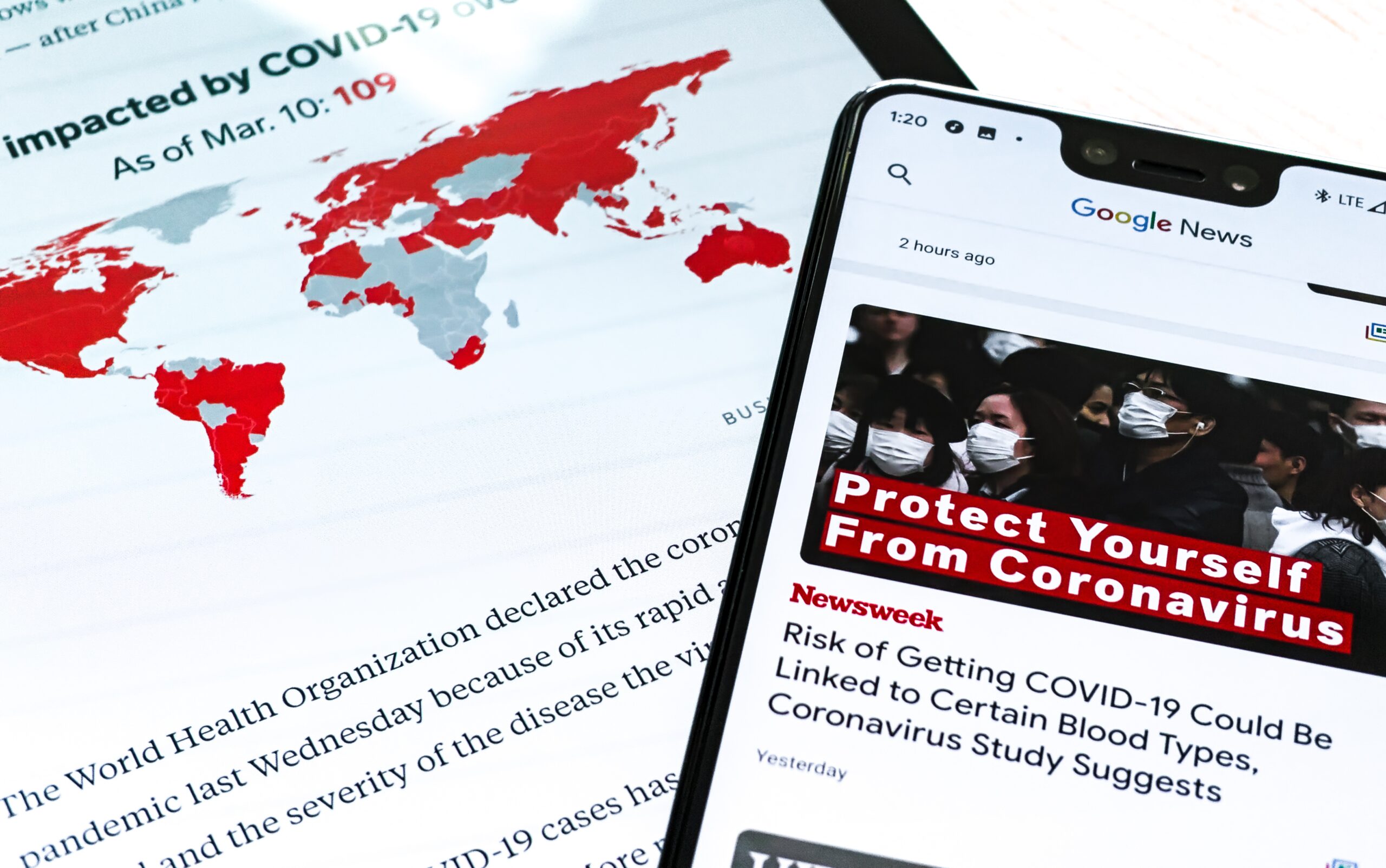6 Effective Ways To Brand Yourself On Social Media
July 20, 2020 | by Admin

What you are with your family is probably a little different from who you are with your significant other — and both are different from who you are alone.
But you’re just your brand with a career in blogging: when you’re writing when you’re designing your site, and especially when you’re on social media.
Social media is important for every blogger ‘s success. Just as the world’s great rivers gather their power from a bunch of streams and streams, so your social media activity is a set of your individual outlets that create a larger whole.
And how can you get the best out of the branding of social media? How are you going to draw new readers to get the best foot forward? How are you going to feed those little streams into a mighty river?
Below we’ve listed six fantastic ways you can make a name for yourself on social media. Take them to heart, and you’ll see more fans, more popularity, more dedication, and higher quality posts.
1. The same brand on every channel
Consistency in online marketing is crucial. If all your online profiles “behave” differently, they will be picked up by strangers, often even unintentionally. And if they see you fresh, followers don’t want to find out who you are.
When we say consistency, we mean any and every aspect of your online personality, such as:
* In your writing, speaking tone
* Subject matter, subjects and areas of expertise
* Color-branding
* Slogan, word pick, sign … etc. etc.
* Logos and/or photo profiles
* Typography and typography
* Visual style (black and white, floral, etc.)
* Name or handle of the user
* Immediate recognition inspires strong branding.
Long before you see a logo or a brand name, have you ever seen a commercial and know who it’s for? It takes years for big brands to build this kind of reputation, but smaller brands like small businesses and bloggers need to start somewhere.
Although you don’t want to overwhelm followers with the same content, it’s important to repeat key assets like a profile picture to easily monitor brand loyalty and enhance how people view your brand.
2. A picture is worth 1000 words
When you’re looking for a quick and easy guide on how to boost your social media success, use your photos.
It’s really that simple: photo comments get 2.3x more Facebook interaction and 1.5x more Twitter retweets, BuzzSumo said.
Of course, you can optimize these results with the right pictures. Echoing our first point, you want to choose a theme that suits your brand personality for your imagery. When you run a floral blog post flower photos. If you’re running a gaming blog, don’t post flower photos.
Different audiences often prefer different styles, but finding yours can take a while.
Don’t get discouraged; it’s just a matter of trial-and-error at first. Experiment with different visual styles — creative images, selfies, videos, motivational quotes, and so on — and see which ones your target audience likes the most.
Keep in mind, especially for blogging, which photos are used when sharing posts. No matter how good the writing is, the image is largely what determines whether or not new readers are clicking. Keep social networking in mind when choosing a picture on a post.
Food bloggers usually understand the value of a picture.
3. Put the “social” in social media
Collaborative elements of social media may seem a little alien to bloggers.
Blogs are a lot like lectures — you say your piece, and only occasionally do people comment on their response. Yet social media is more like a party chat with a lot of back-and-forth people and a lot of participants.
You want to tap into interactivity — this is the biggest benefit of social media.
You will build a more intimate relationship by talking directly to your followers. Even if your blog reveals your innermost thoughts, a two-way conversation is something that brings people together like no other.
Yet socializing in social media has a distinct tag of its own. Here are a number of tried-and-tested ways to enhance your interaction with social media:
- They often respond to comments, though only to say “thank you.
- A lot of people in your group are commenting on the posts.
- Follow the hashtags that are common in your community to understand the posts that your audience likes the most.
- Repost and share with other members of the community.
- To get to know more like-minded people, engage in relevant events and competitions.
- Real-life meetings are taking place to strengthen ties.
Social media marketing has a gift-and-take, and only post-promotion accounts have never developed a stable follow-up.
True, social media is a great marketing tool — but it’s not just a marketing platform, and if you’re just using it for marketing purposes, it’s going to backfire. Social media users anticipate communication from people, especially when they are talking to an integrated company account.
What do we mean by “interaction between people” Okay, for one thing, the story you ‘re telling begins …
ALSO READ: HOW TO CREATE A GOOGLE BUSINESS PAGE
4. What’s your Brand story?
What do you mean by talking about “Whole Foods?” Generic Supermarket doubts that.
And if you don’t shop there much, you know from the vast marketing campaigns of Whole Foods that they emphasize balanced and organic products and that they are more socially aware than other food-related brands.
What do you know about that? And they’re telling the tale of a good organization.
“brand story” or “brand tale” is yet another technique to show off the human side of the brand, but it’s an effective technique.
Brand storytelling goes hand in hand with social media, partly because of the extra personal relationship we’ve mentioned above.
The types of things you post about are going to shape your story about your brand. Over time, people continue to link you to these topics. To suit the example of Whole Foods above, they also post tips on healthy eating.
Yet social media also lets you share true stories.
You can share personal accounts from your actual life, especially for bloggers who often post themselves on their social media accounts. Nothing reveals the human side as much as the relatable, piece-of-life stories that people love so much on social media.
When you’re a professional storyteller, you can also use more imaginative tactics to keep readers coming back and “mine” new fans, like spreading a single story over multiple threads.
5. Quality gets the share
Yes, adding photos to your posts will make them more efficient, but at the end of the day, it is the quality of the content that decides whether people share or ignore it.
The thumb rule for internet marketing is “content is king,” but it’s our life for bloggers as well.
A blogger is just as good as its content, so if you want to convince people that your posts are worth reading, you’ll need to demonstrate your skills through social media participation.
The good news is that you don’t need to create your social media sites with the original content of your blog.
When you need to post something, you can also share posts from someone else (which is also a way to relate more to your community, as we’re talking about below). You want to keep in mind, however, that your reposts are “on brand”—just because the post isn’t yours doesn’t mean you can break your credibility.
Using videos that are not as common as static images and text posts is a single shortcut to show quality content.
That said, there’s a reason why video marketing is growing exponentially, and why social networking platforms are paying more and more attention to this form of content (which we’ll get to in a little bit).
ALSO READ: TIME MANAGEMENT LESSON YOU MUST LEARN
6. Stand out with video
This advice is what you need to provide you with the information you need to turn a mediocre social media page into something positive. But what if you want to turn a decent social media presence into something great? You ‘re going to have to do something different, like the original video material.
Videos earn 1,200 percent more views on social media than combined text and picture messages. The type of videos you upload and share will again rely on the style of your brand and your objectives.
Introductory brand videos are great for brand awareness and draw new followers to explain who you are and what your blog is all about. If you already have good social media monitoring, more important posts, such as how-to guides or serialized episodes, will help you more.
If you’re coming from a background of blogging, the video may sound like an alien concept.
The use of a camera requires a fair amount of preparation at all, let alone the creation of convincing material in a new medium. Learn how to make a video on social media and know all the choices you have.
In short, that’s branding on social media, but don’t forget one of the most relevant rules: be true to yourself.
It’s one thing to emulate branding patterns, but if you’re using strategies that don’t match your own style, social media users will consider inauthenticity. Social media is about the culture at the end of the day-don’t just use it as an advertising platform.
RELATED POSTS
View all


